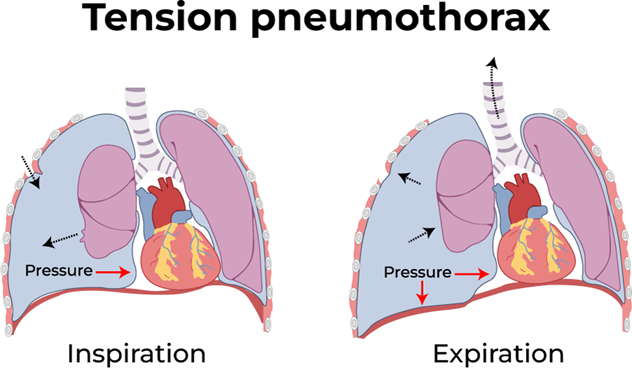A nurse in an urgent care center is assessing a client who reports a sudden onset of irregular palpitations, fatigue, and dizziness. The nurse finds a rapid and irregular heart rate with a significant pulse deficit. Which of the following dysrhythmias should the nurse expect to find on the ECG?
Sinus bradycardia
Sinus tachycardia
Atrial fibrillation
First-degree AV block
The Correct Answer is C
Choice A Reason: This is incorrect. Sinus bradycardia is a slow and regular heart rate that originates from the sinus node. It does not cause irregular palpitations, fatigue, or dizziness, unless the heart rate is very low or the client has underlying cardiac disease.
Choice B reason: This is incorrect. Sinus tachycardia is a fast and regular heart rate that originates from the sinus node. It may cause fatigue or dizziness, but not irregular palpitations or pulse deficit.
Choice C Reason: This is correct. Atrial fibrillation is a fast and irregular heart rate that originates from multiple foci in the atria. It causes irregular palpitations, fatigue, dizziness, and pulse deficit due to ineffective atrial contractions and variable ventricular response.
Choice D Reason: This is incorrect. First-degree AV block is a delay in the conduction of impulses from the atria to the ventricles. It does not affect the heart rate or rhythm, and does not cause any symptoms.
Nursing Test Bank
Naxlex Comprehensive Predictor Exams
Related Questions
Correct Answer is D
Explanation
Choice A Reason: This is incorrect because this client has signs of brain death, such as severe head injuries, low respiratory rate, and unresponsiveness. The nurse should tag this client as black, which means deceased or expectant.
Choice B Reason: This is incorrect because this client has non-life-threatening injuries, such as a simple fracture and scratches. The nurse should tag this client as green, which means minor or delayed care.
Choice C Reason: This is incorrect because this client has minor injuries and is able to walk around. The nurse should tag this client as green, which means minor or delayed care.
Choice D Reason: This is correct because this client has a life-threatening condition called tension pneumothorax, which requires immediate care. This client has a life-threatening condition called tension pneumothorax, which is caused by air leaking into the pleural space and compressing the lung and the heart. This can lead to respiratory failure, cardiac arrest, and death if not treated immediately. The hissing sound indicates that air is escaping from the lung through the wound. The nurse should tag this client as red, which means immediate care is needed.

Correct Answer is A
Explanation
The correct answer is: a. Place a black tag on the client’s upper body and attempt to help the next client in need.
Choice A: Place a black tag on the client’s upper body and attempt to help the next client in need.
In mass casualty incidents, the START (Simple Triage and Rapid Treatment) triage system is often used. According to this system, if a patient is apneic (not breathing) and does not resume breathing after repositioning the airway, they are considered deceased or non-salvageable and should be tagged with a black tag. This allows the nurse to focus on other victims who have a higher chance of survival.
Choice B: Start CPR
While starting CPR might seem appropriate in a normal setting, during a mass casualty incident, resources and time are limited. The priority is to save as many lives as possible. Performing CPR on an apneic patient with a weak pulse would take significant time and resources that could be used to help other victims with a higher chance of survival.
Choice C: Place a red tag on the client’s upper body and obtain immediate help from other personnel.
A red tag is used for patients who need immediate care and have a high chance of survival if treated promptly. Since the client remains apneic even after repositioning the airway, they do not meet the criteria for a red tag.
Choice D: Reposition the client’s upper airway a second time before assessing his respirations.
Repositioning the airway a second time is not recommended in the START triage system. If the patient does not resume breathing after the initial repositioning, they are considered non-salvageable.
Whether you are a student looking to ace your exams or a practicing nurse seeking to enhance your expertise , our nursing education contents will empower you with the confidence and competence to make a difference in the lives of patients and become a respected leader in the healthcare field.
Visit Naxlex, invest in your future and unlock endless possibilities with our unparalleled nursing education contents today
Report Wrong Answer on the Current Question
Do you disagree with the answer? If yes, what is your expected answer? Explain.
Kindly be descriptive with the issue you are facing.
